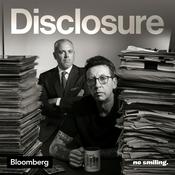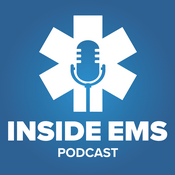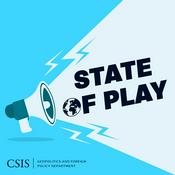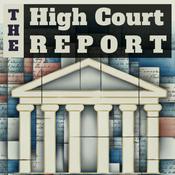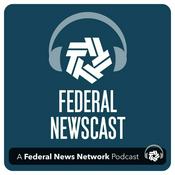86 episodes

We deserve this: The Journey to a National EMS Memorial in D.C.
12/18/2025 | 38 mins.
In this episode of the EMS One-Stop podcast, host Rob Lawrence revisits an issue close to the heart of every EMS professional: creating a permanent National EMS Memorial in Washington, D.C. Rob is joined by Tony O’Brien and James Robinson from the National EMS Memorial Foundation to provide a clear, candid update on where the project stands, why it matters, and what still needs to be done. From the Weekend of Remembrance to the dream of a year-round place of solace and reverence in the nation’s capital, this conversation lays out the long road from idea to reality — and why EMS, as James puts it, truly deserves this. Tony and James walk listeners through the 24-step federal Commemorative Works Act process, the hard work of narrowing 312 potential sites down to three, and the current push to reauthorize the Foundation’s federal authority through House Resolution 2196 and Senate Bill 2546. They explain the preferred site in front of the Hubert H. Humphrey Building (HHS), the partnership with MIT’s School of Architecture and Urban Risk Lab on a powerful design, and the practical realities of funding, sponsorship and bureaucracy. Most importantly, they end with a clear call to action for the EMS community: contact your elected officials, donate what you can, and help spread the word so that a permanent memorial to EMS can finally take its place in Washington, D.C. Additional resources EMS Memorial EMS Memorial Bills: HR 2196 S2546 2025 National EMS Weekend of Honor recognizes 29 fallen EMS workers ‘Never forgotten’: 2025 Moving Honors procession honors 29 EMS providers lost in the line of duty Episode timeline 00:44 – Rob introduces the episode, sets the scene for a revisit of the National EMS Memorial effort, and welcomes guests Tony O’Brien and James Robinson. 01:30 – Tony and James share their backstories. 03:53 – Tony explains the origins of the Foundation at the Weekend of Remembrance/Weekend of Honor and the realization that EMS needs a permanent memorial people can visit year-round. 06:54 – James outlines the Commemorative Works Act, the 24-step process, and how the Foundation has reached step 15-16 over roughly 15 years. 07:54 – Tony details the grueling site-selection work: visiting 312 sites, environmental and noise studies, traffic and solitude considerations, and narrowing to three candidate locations. 10:48 – James describes the need for an Act of Congress to begin, Congressman Stephen Lynch’s early sponsorship, and the 2018 authorization that started a 7-year clock — complicated by the pandemic and federal shutdowns. 13:12 – Tony explains how the initial authorization expired, the need for reauthorization and the most recent Senate subcommittee hearing on federal lands where James testified. 16:41 – James and Tony frame the new bills: Senate Bill 2546 and House Resolution 2196, their bipartisan sponsors and the push for more co-sponsors. 19:49 – Tony lays out the three-point call to action: contact Congress, donate via EMSMemorial.org, and follow/share @EMSMemorial on social media. 23:06 – Tony describes the three remaining sites and why Independence Ave. & 3rd St SW, in front of HHS, is the preferred location. 24:42 – Tony highlights the pro-bono design work by MIT’s School of Architecture and Urban Risk Lab, and the deep engagement with providers, families and survivors. 26:32 – James explains the historical nexus of EMS with HEW/HHS and why the Humphrey Building plaza offers the right reverence, proximity to the Capitol and connection to EMS history. 29:01 – Tony and James discuss next steps: reauthorization first, then finalizing site and design to approach major sponsors with clear answers on location, look and cost — while acknowledging the project has been bootstrapped so far. 32:03 – Tony reassures donors: the Foundation is a 501(c)(3), the board are all volunteers with only necessary professional services paid from donations. 33:13 – Tony gives shout-outs to the National EMS Memorial Service and the National EMS Memorial Bike Ride, and explains how the three organizations’ missions align. 37:12 – Rob recaps the journey, reinforces the call to action, and closes the show with thanks to Tony and James and a reminder to visit EMSMemorial.org and like/subscribe to EMS One-Stop. Rate & review the EMS One-Stop podcast Enjoying the show? Please take a moment to rate and review us on Apple Podcasts. Contact the EMS One-Stop team at [email protected] to share ideas, suggestions and feedback. Listen on Apple Podcasts, Amazon Music, Spotify and RSS feed.

Hyper-turbulent times: EMS economics and AI guardrails with Matt Zavadsky and Dr. Shannon Gollnick
12/03/2025 | 27 mins.
Recorded on the floor of the EMS|MC EMSpire Conference in Charleston, South Carolina, this episode of EMS One-Stop finds host Rob Lawrence in conversation with long-time collaborator and EMS advocate Matt Zavadsky. Fresh off the longest federal government shutdown in history, Rob and Matt unpack what the hyper-turbulence in Washington really means for EMS: suspended Medicare extenders, disrupted grant programs, agencies taking out loans just to meet payroll and training programs put on hold. They break down NAEMT’s flash poll on the shutdown’s impact, the promise of the Treatment in Place (TIP) legislation, and why associations “hunting as a pack” on Capitol Hill matters more than ever. Along the way, they spotlight EMSIntel.org as a national barometer of EMS funding, staffing and response time crises, and issue a clear call to action for providers, billers and leaders to use association tools to contact their members of Congress. | MORE: Government reopens: What EMS providers need to know right now In the second half, Rob is joined by Dr. Shannon Gollnick, paramedic, EMS leader and organizational psychologist, to explore how artificial intelligence is reshaping EMS — right now. Shannon makes the case that AI is “not the future; it is the present,” and that agency leaders must urgently build literacy, policies and guardrails around its use. They dig into the difference between HIPAA-compliant, embedded AI in ePCR systems, and risky open tools like ChatGPT, touching on hallucinations, embedded code and emerging Medicare fraud-detection programs. | MORE: Artificial to augmented intelligence. How Dr. Shannon Gollnick wants EMS to work smarter, not harder Rob and Shannon talk about AI as a powerful but potentially dangerous tool — “like having a tiger” — and outline practical steps for chiefs: Ask: “Do we have an AI policy?” Define what AI can and cannot be used for Insist that every AI-generated work product is double-checked by a human before it hits the record Memorable quotes “We weren't here to actually scare you off it. We're here to let you know that it's here, but it's like having a tiger, right? We all love to have a tiger, but it has to be contained in some sort of guard, otherwise it's going to run rife and cause havoc, and we don't want that.” — Rob Lawrence “This is part of the hyper-turbulence that's occurring in EMS right now.” — Matt Zavadsky “So I think the message for the profession right now is, now is not the time to put your foot on the brake. It's time to put your foot on the gas.” — Matt Zavadsky “We put the fun into function.” — Dr. Shannon Gollnick “I think it's important to understand that AI is not the future. It is the present. We are currently here right now. And it's nothing to be afraid of.” — Dr. Shannon Gollnick “If you're not doing it, I promise you that your staff is doing it and they're playing around with AI.” — Dr. Shannon Gollnick “Guardrails don't exist from a congressional standpoint. They don't exist from a regulatory standpoint. The technology is moving far too fast. So we as agency leaders have to take the lead in putting up some of those guardrails.” — Dr. Shannon Gollnick “There are ePCR software out there that are using proprietary AI that will use AI-generated narratives. And that absolutely is 100% good to go. What we don't want to see is our crews putting in their ChatGPT to have ChatGPT write their narrative.” — Dr. Shannon Gollnick “ChatGPT has embedded code inside of it that you can't see, but that code is there ... so what we're kind of afraid to do is to say, hey, what happens 6 months from now, 8 months from now when Medicare does an audit, they run your ePCRs and find all of this embedded code from ChatGPT ... you open yourself up for a lot of compliance issues.” — Dr. Shannon Gollnick Additional resources: EMS Intel EMS News Tracker American Ambulance Association Advocacy NAEMT Advocacy EMS shutdown survival: What leaders need to know now Charting the future: How AI is rewriting the EMS narrative Episode timeline: 00:21 – Rob introduces guest Matt Zavadsky 02:02 – Rob recaps the 40-plus-day federal government shutdown, questions about reopening, and his upcoming return to Capitol Hill for renewed advocacy 02:02 – Matt frames the shutdown as part of the “hyper turbulence” in EMS; explains the regulatory suspensions, pauses in Medicare extenders and grants, and how cash-flow uncertainty forced some agencies to take out loans just to make payroll 03:04 – Matt details NAEMT’s flash poll (408 agency responses) showing suspended training and grant-funded programs, and warns of a possible repeat shutdown around January 30 03:54 – Rob and Matt discuss the reopening of government, ongoing bipartisan work, and the risk that everything “comes to a grinding halt” again if Congress can’t agree 04:51 – Matt explains why NAEMT released the shutdown-impact poll even as government reopened and stresses the need to keep pushing for permanent relief from Medicare extenders and advancement of key bills like Treatment in Place (TIP) 06:03 – Matt outlines the House and Senate TIP companion bills and why Medicare paying for treatment in place is better for patients, EMS, the health system and the Medicare trust fund 06:54 – Rob notes broad association/provider support and professional lobbyists on the Hill; Matt stresses that field providers, administrators and billers must still use association legislative portals to send letters to Congress 08:08 – Matt describes a surge in communities reevaluating their EMS delivery models because of staffing, finance and subsidy challenges — “a great time to be an EMS consultant” 09:09 – Rob introduces EMSIntel.org as a curated clearinghouse of EMS news, used to show communities they aren’t alone; describes failed tax measures and funding referenda 10:15 – Matt cites EMS Intel data: ~85% of stories each month involve funding, staffing or response times; Rob and Matt stress the ubiquity of these themes from big cities to small towns 11:09 – Rob highlights mutual aid tensions and taxpayers questioning why they “pay to send our resources somewhere else;” both emphasize that hyper-turbulence and funding gaps are national issues 13:23 – Rob resets the scene from the EMSpire conference and recaps Matt’s Hill update before introducing Dr. Shannon Gollnick 14:41 – Shannon gives his backstory: in EMS since 1996, paramedic since 2002, progression into EMS leadership, doctorate in organizational psychology and focus on how organizations function 15:14 – “We put the fun into function.” 15:24 – Rob invites Shannon to talk AI, calling it “the specter we are embracing everywhere,” and references HIPAA concerns; Shannon opens with the core message: AI is not the future, it’s the present, and nothing to be afraid of 16:03 – Shannon urges leaders to build AI literacy, noting that if agencies aren’t using it, their staff and the younger generation already are 16:28 – Shannon emphasizes policy and procedure: AI guardrails aren’t coming from Congress or regulators, so agency leaders must define how AI will be used and where its limits are 16:55 – Rob reminds listeners that AI in EMS isn’t new, citing early monitor rhythm interpretation in the UK; Shannon underscores that crews already use AI tools and that unmanaged cut-and-paste practices can create billing and compliance risks 17:24 – Shannon explains the dangers of using open tools like ChatGPT for ePCR narratives: potential PHI exposure in a “black box” system and AI hallucinations generating plausible but false patient information 18:21 – Shannon describes how AI “wants to answer your question and make you happy,” leading to made-up details, and shares examples from testing minimal-input scenarios that returned overly detailed, inaccurate narratives. 19:03 – Shannon calls ChatGPT “kind of a snitch,” explaining embedded code markers that fraud detection tools — and increasingly Medicare’s AI-based “Wiser” program — can use to identify AI-written content in documentation 19:59 – Shannon warns about retrospective audits and compliance exposure if ChatGPT-coded narratives are found in ePCRs, noting that AI rules are still emerging and tech is outrunning regulation 20:51 – Rob summarizes the mixed message: AI is here and being built into devices and software, but there are real dangers. They discuss data going “to the cloud” — which Shannon defines as “somebody else’s computer.” 21:24 – Shannon frames AI as a powerful tool that can “put a lot of holes in the wall” if misused; he references fraudulent AI uses and deepfakes as emerging issues 22:05 – Shannon compares AI’s impact to the internet’s paradigm shift; Rob gives a “spoiler alert” about his own workflow using transcripts and ChatGPT agents, and notes the importance of reading and checking any AI-generated output 22:45 – Shannon reinforces that AI makes mistakes and cannot understand human context; he uses his “How you doing?” Joey Tribbiani vs. Tony Soprano example to illustrate contextual nuance 23:06 – Rob expands the context point with the “Friends”/“Sopranos” slide and reminds listeners that once AI-written words are published, “you said it.” Shannon highlights the WebMD effect and AI-driven self-diagnosis risks. 24:02 – They note that ChatGPT can generate long, complex diagnoses without sufficient patient context, leading to errant or misleading outcomes if misused clinically 25:00 – Rob summarizes: AI is here and, used correctly, is a good thing; advises chiefs to ask their teams, “Do we have an AI policy?” 25:27 – Shannon outlines what an AI policy should contain: acknowledgment that AI is here; clear, non-fearful framing; specificity on what decisions AI can support; and clarity on which tools (e.g., embedded EPCR AI) are allowed versus prohibited uses of ChatGPT 26:17 – Shannon stresses AI should not be used for clinical decision-making or clinical narrative writing; its role should be administrative only, and all outputs must be double-checked Enjoying the show? Email [email protected] to share feedback or suggest a guest for a future episode.

Jamaica Fire Brigade’s front line: Inside the Hurricane Melissa response
11/13/2025 | 30 mins.
In this episode of the EMS One-Stop podcast, host Rob Lawrence welcomes Dr. Hezedean Smith, who spotlights the human and operational toll of Hurricane Melissa on Jamaica and the wider Caribbean. Dr. Smith draws from first-hand perspective from the ground, detailing catastrophic damage to homes, utilities, roads and communications — which compounded the workload and emotional burden for Jamaica Fire Brigade (JFB) firefighters and EMS providers. Dr. Smith highlighted the Brigade’s Amazon Wish List effort, which aims to route essential personal items and operational supplies directly to affected JFB members and stations to sustain continuity of operations and support responders’ families. After the break, Dr. Smith switched hats as the newly elected President of NEMSMA to outline the association’s renewed momentum: New association management support Expanded member services and credentials The inaugural NEMSMA Leadership Conference The NEMSMA Leadership Conference will take place in Washington, D.C., March 23-24, 2026, intentionally adjacent to EMS on the Hill to create a leadership-plus-advocacy “two-fer.” Highlights include keynote Gen. Robert Neller (Ret.), plus a deep bench of EMS leaders and educators. Memorable quotes from Dr. Hezedean Smith “Many homes destroyed, utility systems interrupted, critical infrastructure in terms of communities having the ability to communicate, leaving thousands displaced, even fire stations having operational challenges as it relates to communication and interoperability ... ” “I stayed in the local fire station. I wanted to be there with the men and women on the ground, to make sure that I had that communication, that constant contact with them.” “My focus will be on the firefighters and ensuring that we get enough supplies to go directly to the firefighters.” “We want to tear down silos. We want to redefine leadership and ensure that we continue to collaborate across this globe.” Additional resources: Jamaica Fire Brigade – Amazon Wish List National EMS Management Association (NEMSMA) NEMSMA Leadership Conference: Washington, D.C., March 23-24, 2026 EMS on the Hill, March 25-26, 2026, Arlington, Virginia International Journal of Paramedicine EMS One-Stop: General Robert Neller on ethical leadership and adaptability Episode timeline: 00:46 – Quick industry/policy update 01:27 – Set-up: Hurricane Melissa overview; impact stats and current situation 02:12 – Welcome Dr. Hezedean Smith 02:26 – Dr. Smith’s backstory: Jamaica roots, USAF medic, Orlando FD, two fire chief roles, GES Consulting, Caribbean EMS focus 04:20 – First reactions to Melissa: scale of damage; compounded human toll 05:58 – Deployment cadence: aligning with JFB command, CDEMA, national EOC; travel hurdles; rapid integration on arrival 08:28 – Why existing relationships matter; staying in-station with crews; supporting leaders and frontline needs 11:13 – Call to action: Amazon wish list for responders’ personal and operational needs; distribution via JFB logistics 13:20 – Specific needs (PPE, boots, clothing, hygiene, basic medical supplies) and the ongoing recovery realities 17:46 – NEMSMA — new president, renewed energy, new AMC, who NEMSMA serves 20:14 – Board/leadership shout-outs; programs (FTEP, ACPE), member services, momentum 22:49 – Conference preview (Mar 23–24, 2026, D.C.): theme — disruptive leadership; Gen. Robert Neller keynote; speaker lineup; proximity to EMS on the Hill 26:29 – IJOP collaboration and research-to-podcast pipeline; communications and sponsorship improvements 28:29 – Closing thanks; unified call to support JFB and engage with NEMSMA initiatives Rate and review the EMS One-Stop podcast Enjoying the show? Please take a moment to rate and review us on Apple Podcasts. Contact the EMS One-Stop team at [email protected] to share ideas, suggestions and feedback. Listen on Apple Podcasts, Amazon Music, Spotify and RSS feed.

EMS shutdown survival: What leaders need to know now
10/10/2025 | 33 mins.
From Medicare cuts to billing delays, Asbel Montes joins Rob Lawrence to share practical strategies EMS agencies can use to weather the reimbursement storm In this episode of the EMS One-Stop podcast, we tackle the fast-moving realities of a federal shutdown and what it means for EMS finance, reimbursement and day-to-day operations. Rob Lawrence sits down with Solutions Group’s Asbel Montes — a veteran of EMS reimbursement and policy expertise — to decode where Congress is (and isn’t), what CMS’s temporary claims hold really means, and how ambulance services can protect cash flow while preparing for potential reprocessing chaos if extenders aren’t promptly restored. Beyond the headlines, Montes lays out a pragmatic playbook: build a Plan B for cash continuity, align with your billing team on reprocessing workflows, and model exposure across payers tied to the Medicare fee schedule. The conversation then widens to balance billing — why federal change is unlikely soon and why state-level action is delivering practical protections — before closing with leadership lessons on adaptation, data and telling EMS’s story as a guide, not the hero. Memorable quotes from Asbel Montes “Our extender expired — that’s that additional payment that we get from Medicare of that 2%, 3%, 22.6% — it expired September the 30th, and it was tied to the House-approved CR that went over to the Senate.” “We’re solutions givers, as we say here at Solutions Group, not crisis managers. And if you have a plan, I can at least execute a plan.” “What turned out to be a smaller amount, now the cost associated with it, you started to really understand the complexities that really happened in people’s AR.” “If this lasts longer than 15 days … then I would basically have a plan in place. So I would be trying to find out from my billing team … what is your contingency plan to ensure I don’t see a hiccup in cash moving forward?” “The only way government can really invoke change is to make it hit where it hurts. And that’s what’s going on right now. They’re hitting the pocketbook and our industry is grappling with it right now.” Additional resources Asbel Montes: The government shutdown’s ripple effect on healthcare The Leadership Lab with Asbel Montes Episode timeline & key moments 00:21 – Why the shutdown matters to EMS reimbursement and operations 01:21 – Montes’s 101: role at Solutions Group; 28 years in EMS finance and policy 02:40 – Historical context: number and length of shutdowns; current Hill outlook 03:48 – The ambulance extenders expired (2% urban, 3% rural, 22.6% super-rural); CMS claims hold window 05:03 – Planning posture: realistic timelines; “we’re solutions givers, not crisis managers” 06:12 – Back-of-the-napkin math: short-term dollars vs. long-term reprocessing burden 07:43 – 2015–2016 déjà vu: retroactive fixes and the heavy lift for back-office AR 10:26 – Secondary impacts: VA eligibility, appeals, enrollments during a prolonged shutdown 11:11 – The “three-legged stool” for leaders: (1) have a plan with billing; (2) reconcile accounts & patient balances; (3) prevent cash-flow lag if more than15 days 14:06 – Framing the moment: “hurricane shutdown” response and recovery mindset 15:43 – Balance billing at the federal level: committee work, political pain and why movement is unlikely soon 18:19 – State action wins: consumer protections and access; examples of Medicare-indexed approaches 20:24 – Why ground ambulance stayed out of federal NSA; local regulation and state primacy 22:42 – “All politics are local”: using EMS’s public visibility to advocate for patients and providers 23:09 – Adaptation over preservation: seize the 6-18 month window; let data and clinicians lead reform 27:13 – Lawrence’s “Darwinism” takeaway: adaptation as survival 28:31 – The Leadership Lab podcast: purpose, cadence and upcoming guests; Montes’s leadership journey Rate and review the EMS One-Stop podcast Enjoying the show? Please take a moment to rate and review us on Apple Podcasts. Contact the EMS One-Stop team at [email protected] to share ideas, suggestions and feedback. Listen on Apple Podcasts, Amazon Music, Spotify and RSS feed.

Rainn Wilson on ‘Code 3’ and the brutal beauty of EMS life
9/18/2025 | 23 mins.
In this episode of the EMS One-Stop podcast, our host, Rob Lawrence, sits down with Hollywood actor Rainn Wilson, who stars as Randy in “Code 3.” Known worldwide for his role as Dwight Schrute in The Office, Wilson has stepped into the world of EMS, portraying the life of a burned-out paramedic with both grit and humor. In the conversation, Wilson reflects on the process of bringing this story to life, his ride-along experiences in Los Angeles, and the powerful realities he uncovered about our profession. More than just a performance, Rainn has become an unexpected advocate for EMS. He speaks candidly about the underfunding of frontline providers, the emotional toll of the work and the sheer humanity that comes with being welcomed into people’s lives during their most vulnerable moments. Alongside the serious themes, he reminds us that Code 3 is also a comedy — one that captures the gallows humor, camaraderie and resilience medics carry with them on every shift. | MORE: Why ‘Code 3’ might be the most honest EMS film yet. From a ticking salary counter to fourth-wall confessions, this EMS road movie isn’t just another Hollywood take. It’s a love letter, a warning and a mirror. Memorable quotes from Rainn Wilson “Most of all, I just fell in love with the character of Randy.” “Bottom line, the fact that first responders are getting basically what people that work at Starbucks are getting paid really blew my mind.” “Well, one thing I never thought of, maybe stupidly so, is how vulnerable everything is because you're going into people's homes and they're in crisis.” “I think Rob, no one should be allowed to graduate from high school without their kind of basic CPR training.” “Everything about EMS — the tone, the vibe, the gallows humor, certainly all the technical medical elements, the burnout, the camaraderie, the idea that there's a mission here — they do it because they love it.” “Well, it was an honor to learn about this world and to make a movie that these workers are excited about and proud of.” “I want to say from the bottom of my heart, you know, ‘thank you. Thank you for your work. And, you know, I think it's grossly underappreciated, but, you know, America needs you.’” Episode timeline 00:26 – Rainn Wilson on the vulnerability of entering people’s homes in crisis 00:57 – “All we want to do is save your life. Some of you don’t make it easy.” 02:53 – Rainn’s first impressions of the “Code 3” script 03:38 – Falling in love with the character of Randy 04:22 – Discovering the realities of EMS work and shocking pay disparities 06:09 – Lessons from Wilson’s Los Angeles ride-along 10:12 – Wilson on CPR training and why everyone should learn it 12:29 – “We’re essentially a tube and a pump.” 13:11 – Rehearsals and the importance of portraying EMS medicine accurately 15:09 – On burnout, PTSD and the need to support medics’ mental health 18:08 – Using “Code 3” salary comparison as an advocacy tool 19:07 – Wilson praises Rob Riggle’s ED doctor role and its realism 20:41 – Cherishing the chance to shed light on EMS 21:10 – Reminder that the film is also a comedy — “a good old time with a bucket of popcorn” 22:25 – Final message: “America needs you. Keep saving lives.” Rate and review the EMS One-Stop podcast Enjoying the show? Please take a moment to rate and review us on Apple Podcasts. Contact the EMS One-Stop team at [email protected] to share ideas, suggestions and feedback. Listen on Apple Podcasts, Amazon Music, Spotify and RSS feed.
More Government podcasts
Trending Government podcasts
About EMS One-Stop
Listen to EMS One-Stop, 5-4 and many other podcasts from around the world with the radio.net app
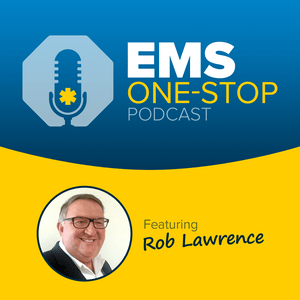
Get the free radio.net app
- Stations and podcasts to bookmark
- Stream via Wi-Fi or Bluetooth
- Supports Carplay & Android Auto
- Many other app features
Get the free radio.net app
- Stations and podcasts to bookmark
- Stream via Wi-Fi or Bluetooth
- Supports Carplay & Android Auto
- Many other app features


EMS One-Stop
download the app,
start listening.




